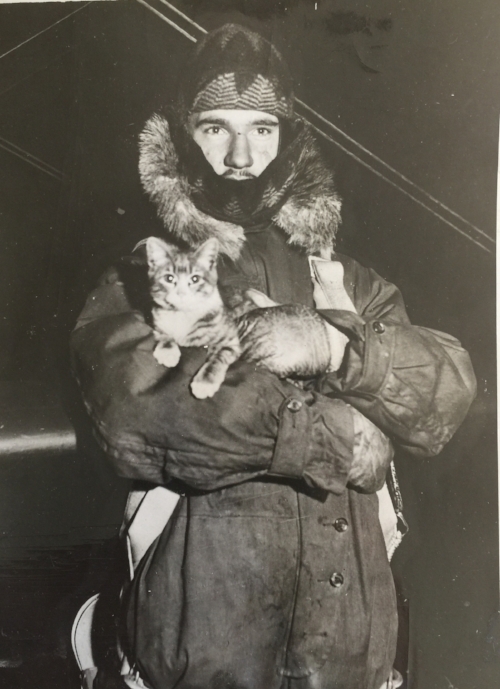Best Flying Weatherman, 1931
Johnny Starr and Cat. (Photo by Acme Newspictures, 12/17/1931. Photographer unknown. Scanned from a print in my personal collection.)
Johnny Starr was celebrated as the highest-flying weather pilot in the United States Weather Bureau’s upper air service. Beginning on July 1st, 1931, the Weather Bureau commissioned daily flights to record conditions in the upper air, creating data needed for the new technique of air mass analysis. Airplane observations, quickly shortened to “apobs,” replaced kites. Weather Bureau personnel attached a meteorograph to the wing of Starr’s Spartan monoplane, recording temperature, pressure and humidity as it ascended. Pilots like Starr earned $25 only if they reached at least 13,500 feet, plus a 10% bonus for every additional 1,000 feet. They wore woolen gloves and fur-lined flight suits to deal with the wind and cold, which could reach 40 degrees below zero. According to the assistant chief of the Aerological Division, Starr typically reached 2,000 to 3,000 feet higher than any other man in the service.
Starr is holding the Omaha airport’s pet cat, which came out to meet him after every flight. By 1938, when the Weather Bureau required pilots to reach 16,500 feet to be paid, some pilots carried cats, dogs, or even squirrels aloft with them. As oxygen dwindled, the animal’s head would droop, allowing the pilot to descend before his judgment was impaired by hypoxia. Twelve pilots were killed making apobs between 1931 and 1938. Routine upper air flights were replaced by radiosondes during the late 1930s.
This picture was taken by a newspaper wire service in Omaha, Nebraska on December 17, 1931. I bought a print via eBay.
Learn More:
· Donald Whitnah, A History of the United States Weather Bureau (University of Illinois Press, 1961): 187-189.
· “Observes Weather From Ship,” Popular Aviation (February 1932): p. 80.
· “Robot Balloons to Report on Weather; Devices Will Radio Data to the Ground,” New York Times (July 24, 1938): p. 24.
Image Source:
Photo by Acme Newspictures, 12/17/1931. Photographer unknown. Scanned from a print in my personal collection.





